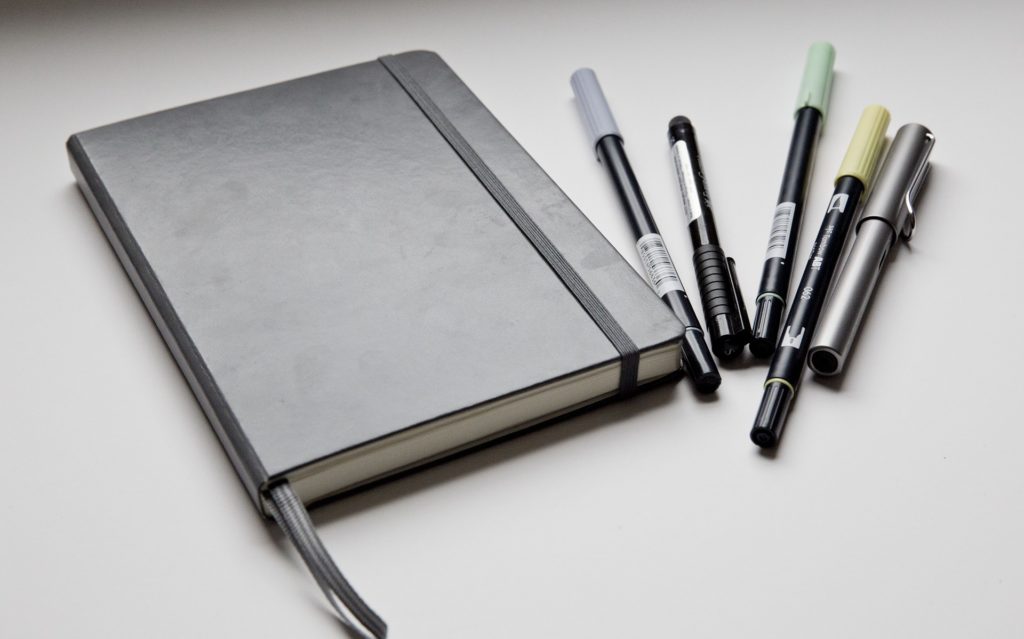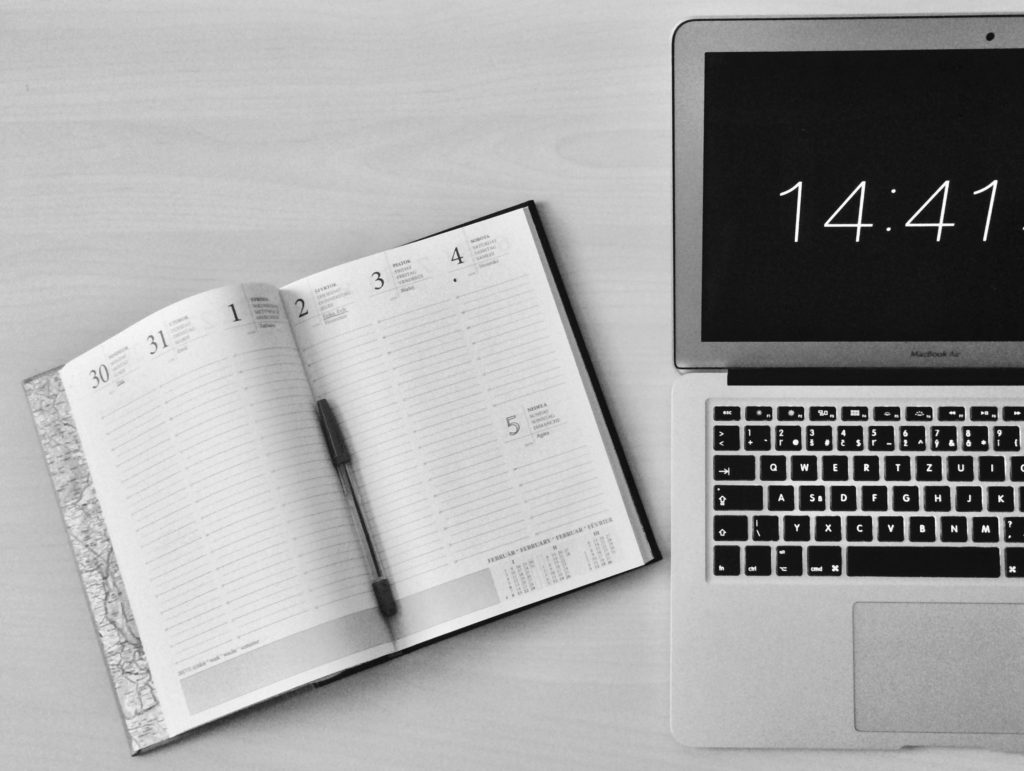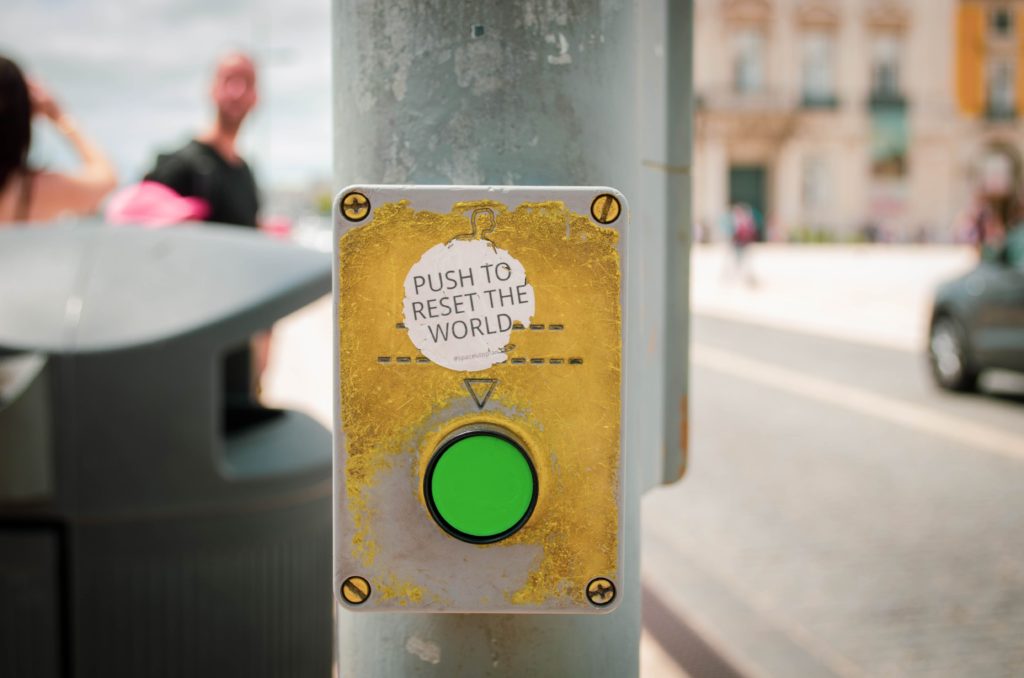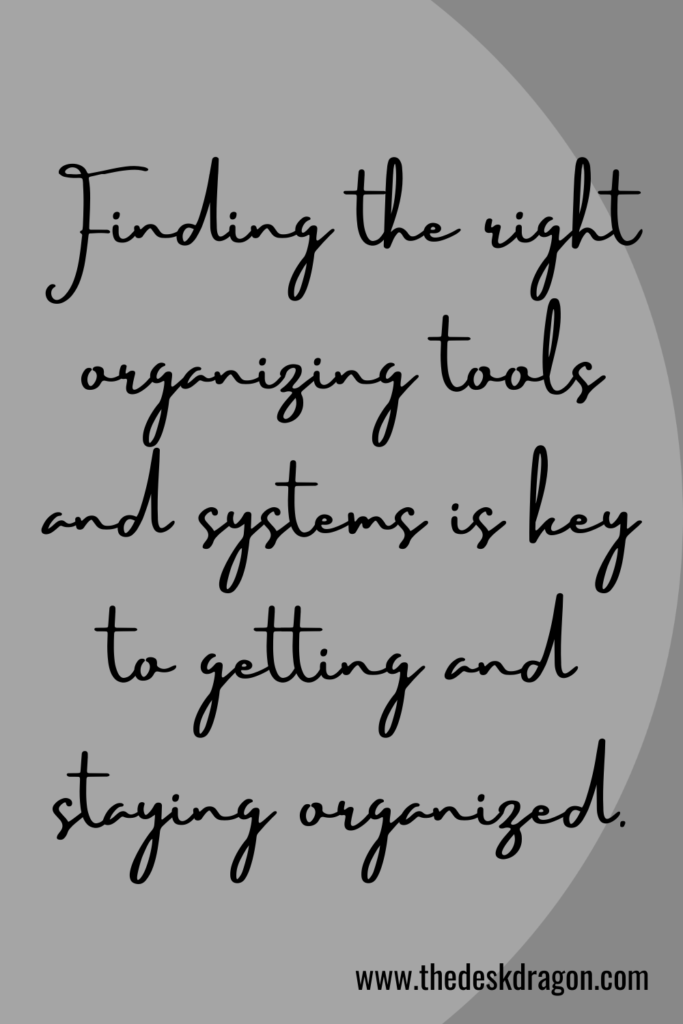Some of My Favorite Organizing Tools
I’ve said it before, and I’ll probably say it again: finding the right organizing tools and system(s) is key to getting and staying organized.
As I have worked to develop my own habits and systems, I have tried a number of different organizing tools. Some have worked well; others have helped to a point, but ultimately didn’t serve all my needs; others haven’t worked for me at all.
I want to share some of those tools today, and explain how they have or haven’t helped me.
Organizing Tools that Work Well for Me
While I may use one tool more than others, there isn’t only one that I use exclusively. Rather, I combine the use of several tools into one larger organizing system. This way, I get to capitalize on the advantages of each and I’m not constricted by their limitations.
1. Bullet Journal

Of course, I have to start here!
My bullet journal is my main calendar and planner. I use it to plan my months and weeks, to make daily to-do lists, and to keep track of tasks and goals.
Because a bullet journal starts out entirely blank and I fill it in as I go, I’m able to tailor everything to what I need and how I think. I can easily change, add, or remove any element as needed, and design and alter the format of every single page.
It strikes the perfect balance for me, because I can create structures without being confined to those structures for the entirety of the notebook. (I often do, but I don’t have to.)
2. Pre-Printed Planner

Although one advantage of a bullet journal is keeping everything in one notebook, I actually have a few other notebooks/planners in addition to it. One of these is my business planner.
I like having a separate planner for my business stuff, because it helps me separate work from personal life. When I open this planner, I know I am in “work mode,” which helps keep me from getting distracted.
Mostly, I use this to track how I spend my work time, and to decide on a few focus tasks for the week. I use a little bit of color coding, but I don’t decorate it like I do my bullet journal. I keep it simple and work-focused.
3. Trello
Trello is an online organizing tool. It’s great for making checklists, especially ones that need to be made over and over again.
I like to use Trello for two main things: routine checklists and keeping track of information that may outlast my six-month bullet journal. These are things that would be a pain to have to write by hand over and over again, or that I need to have handy at times when I may not have access to my journal.
I have some lists for storing information, and others for checklists that are in progress. I’ve created template cards for certain routines, like my weekly and monthly resets, with a checklist of all the tasks involved in that routine.
When I’m ready to begin that routine, all I have to do is create a new card from the template, and it copies over the checklist. No need to write out every single task every week or month.
In the past, I have simply written out these routines in my journal on a routines reference page, but it’s helpful (and motivating) to me to actually check each item off the list.
4. Weekly & Monthly Resets

These are less of a tool and more of a routine, but they are invaluable to my goal-setting process. (I’ve written more about them here!)
My resets involve both evaluating what I have done previously, and planning for what I will do next. They help me catch up on tasks or goals that I have forgotten or let fall by the wayside, and clear my mind.
And they have also helped in a way I didn’t expect. I don’t have to think so much about the tasks that I know I will complete during the weekly or monthly reset. It removes some of the decisions I might otherwise have to make, because I know exactly when I’ll get around to those tasks. I don’t have to stress over what to do now and what to do later.
Organizing Tools that Haven’t Worked as Well
Finding the right organizing tools and system is a process, which means there are going to be tools that I try that simply don’t serve my needs well. This doesn’t mean I think they aren’t useful tools — they just don’t work the way I need them to right now.
1. Digital Calendars
I know many people have great success with time blocking in Google Calendar or other similar tools, but for me this was just another thing to remember to do. I already use a weekly calendar setup in my bullet journal, so creating the same thing on a digital calendar proved redundant.
2. Pre-Printed Planner
Yes, this one belongs on both lists.
Before I started bullet journaling, I had always used a pre-printed planner. The problem was that I either left a lot of blank space, or needed to write things in places that had other labels. I couldn’t customize it very much, so I didn’t use it for much, either.
3. Habit-Tracking Apps
I consider my first bullet journal to be the start of my habit-building journey, but actually that’s not quite accurate. A few months before I started bullet journaling, I tried using an app that let me set daily habit goals and reminders.
Although I obviously learned that I prefer a more analogue approach, this app did help me start to develop the mindset I needed. I think it also encouraged me to look for a system that would work even better.

What Organizing Tools Work Best for You?
My journey towards better organization and more healthy habits doesn’t stop here. I intend to keep trying out new organizing tools and testing my systems to ensure that I don’t lock myself into something that no longer serves it purpose in my life.

